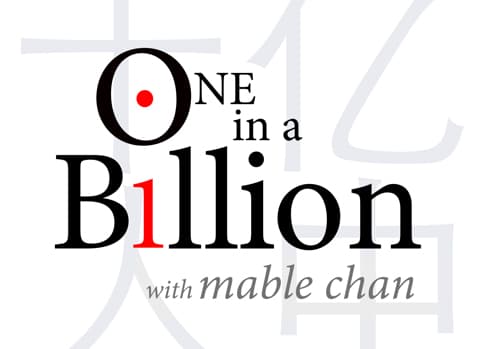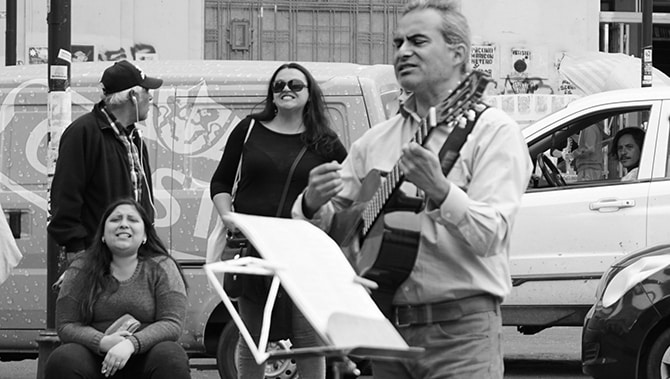The city of Valparaíso is energetic, languid, poetic, and dilapidated, all at the same time, but not enough to reduce me to tears.
This was the thought going through my mind, as I turned from Calle Esmeralda to begin the ascend to the museum of poet Pablo Neruda. Jetlagged, liberated, excited, but crying.
And that, was seconds before I realized I was tear-gassed. My downpour was because of the leftover tear gas from the actions on Plaza Anibal Pinto the day before. The realization finally dawned when I saw people around with mouths and noses covered by masks, scarves, or hands, their eyes rosy, scarlet, or coral. It wasn’t clear whether the scene was induced by chemicals, or stirred up by contagious emotions. When the red eyes glanced over my direction, I couldn’t tell whether they were carrying compassion, animosity, or mere bodily irritation.
The imminent danger of raw feelings, of clashing wants, of a society a-changing, had never been so in my face — in the form of the familiar clear liquid that was all of a sudden agitating and mysterious.
I arrived in Chile just a couple of hours before, on a Thursday morning with an announced national strike, amidst the nation-wide protests that had already been raging for a month. It was all over the news: this was a movement triggered by a thirty-peso raise in the subway fares, but truly rooted in a thirty-year-long frustration with inequality and demand for social improvements.
Among the signs and posters covering the jaded streets of Valparaíso, there were not only ones pointing fingers at president Sebastián Piñera and police brutality, but also ones featuring faces and names, in memory of people persecuted during Augusto Pinochet’s dictatorship. In the photos, The eyes of the persecuted pierced through the decades, remaining sober amidst the rampant tear gas when I, a mere peripheral outsider, could not.
Memory is such a burdened word for Chileans, or so I learned, that they built a whole museum for it. (Unfortunately, the Museum of Memory in Santiago wasn’t open to my pilgrimage.) The details of some recent decades sat like an obscure cloud in Chilean national history, lacking, for a long time, an official consensus regarding the specifics of what happened that shaped the nation today.
In The House of the Spirits by Isabella Allende, a Chilean novelist in exile, the character Clara del Valle had kept a notebook trailing events through her long life, which mirrored historical events in Chilean history. The notebook was aptly termed by Allende as “the notebook that bore witness to life,” from which I always read a sense of both longing and determination: longing for a past lost, determination to reclaim.
For Chileans swimming upstream the battle of reclaiming the past, collective social memory had to be collectively re-constructed, which, to me, sounded at once familiar and foreign with my own historical baggage.
I didn’t come to this country in order to spectate on the escalating national movement. I came simply as a tourist, prepared to have my heart stopped and breath taken while wandering through the Chilean Patagonia and Atacama Desert. But as I stood between Calle Esmeralda and Plaza Anibal Pinto in the shapeless thin mist of tear gas, I felt as though I was watching the past and future of this country coalescing and unfolding, right before my sore eyes.
It felt relevant. I felt relevant as a witness for a new memory being shaped.

“Did you smell the gas?” As I passed my hostel, the girl sitting at the front desk greeted, “Stay up in the Cerros (hills). As long as you don’t go down to the ‘plan’, you are safe.” El plan is what locals call the flat commercial areas by the port, where people go about their everyday business — as opposed to the residential cerros, which are also where most tourists swarm among the famous street art scene of Valparaíso. The protests always happened in el plan, and only made it up to the cerros in the forms of sirens, shouts, and occasional posters on the walls.
When I walked around the peaceful cerros of Alegre and Concepción, the protest felt like a muffled drumbeat in the background, present but distant. That was how the protests felt like throughout most of my two weeks in Chile: it was there, even close by sometimes, but I was always shrouded by some kind of protection. Sometimes it was the geographical divide of the city, and in another time it was the physical enclosure of the cab that took me and my friends by the burning Plaza Italia in Santiago (the epicenter of the national movement). For a whole week, the protection took the form of the grand natural barrier of Patagonia and Atacama that sheltered travelers in a nonexistence of politics.
Only occasionally, those protective layers breached small holes, and reality seeped in. But even those times felt like seeking the face of the moon in water — only shattered impressions.
That afternoon, I was lured by the most surreal sunset. Everything, from the ocean to the top of the hill, was aglow in an exhilarating rose gold. But then there was the smoke, rising out of a neighborhood in el plan, in the color of materialized grievance — but even that smoke was nestled in a dreamy pink.
In reality, that romantic-passing smoke had come from something being burnt, most likely a store front. The next morning, it would turn into a gaping black hole, joining the many already plaguing the streets of Valparaíso. The ghostly howls of military tanks filled the gaps in my senses where the smoke couldn’t reach. I was standing at a vista point in the cerros, surrounded by a crowd of local young people, whose faces were impassioned and impatient. A dormant ferver permeated the air. Maybe 50 meters down below, tear gas invaded the street with trails of fire, and protestors scattered as they let out indignant screams.
Half way between the burning street and I was a quaint little restaurant, still part of tourist central. A family of blond, pale travelers sat by the railings facing the street down below. They bought a snack in exchange for the front row seat in the cinema of other-people’s-strife, cameras in hand. The waitress explained the specials of the day to a couple sitting in the corner, and later swirled out with a sparkling cocktail — the kind that reminded me of a night out or an anniversary celebration, not a revolution. The couple chatted pleasantly, never once glancing up or down, as if unaware of being sandwiched in between frontlines.
I detested their nonchalance, but only because I knew I was inevitably like them (in form or in essence: my gore tex jacket, and my blank stare when the Spanish was too fast). Reflecting upon the stark contrast between my life in the tourist bubble and the real, too-much-at-stake life of Chileans fighting for their dignity, I questioned my validity as a witness. Could it be that the idea of witnessing was a pseudo-proposition, as I could not possibly know what it’s really like?



As if to get some perspective, I turned to the young man next to me, who was part of the cheering crowd of locals. When I asked what was going on, he shrugged “It’s just another protest.” As if it were that normal: there was water, air, and there were protests. When he took breaks from yelling at the cops down below, he became my interpreter of the scene. He explained what typically happened in an action like this, with passion of course.I asked, “Are you going to be part of the protest?” “Not yet,” he said, “but soon.” His eyes gleamed with anticipation.
I’m not a revolutionary type. I often see my own role as to analyze, to understand, to observe from a close distance, but a distance nonetheless. For the sake of level-headedness, I, more often than productive, am habitually skeptical. I am puzzled, alarmed, and fascinated by passion like this man’s, especially if it arises in myself, but when I see it in other people, I envy. Does it have anything to do with being in cultures and micro-cultures that valued diverse opinions only in appearance? Has my education acquiesce in linking anything irrational to primitiveness? Has the Big Brother successfully conditioned me by subduing all the controversial passions I could see, and the records of them?
“When did you get here?” The young man’s interruption saved me from the spiraling self-questioning. “I just flew in this morning,” I said. He looked at me, sincerely excited, “It’s an interesting time to be in this country.” He paused, and added, “It’s a great time to be here, actually. You have so much to see, and to remember.”
I held onto these words of his, tightly.
The question about whether the idea of witnessing was a pseudo-proposition loomed larger than the circumstances at hand. There had been many things in my world and history that I thought of jotting down in my own “notebook that bore witness to life.” The things our mothers and grandmothers didn’t talk or talked too much about. The things about us that other people’s mothers and grandmothers didn’t talk or talked too much about. The things that we might not get a chance to talk about again if we didn’t hurry to talk about them right this moment, as the forces erasing them could sometimes be all too powerful.
But I felt disqualified. After all, I was not my mother or my grandmother, and I always felt like an outsider to the societies whose histories laid a burden on me. I felt I lacked the credentials of a good witness, one that truly and intimately understood the situations from the first hand. What if I, in attempting to record memory, was not capable of doing things justice? For a long time, this thought debilitated me, and halted my writing hand in mid air.
What’s more, the worst possible questions against a memory bearer haunted me: what if my memory truly didn’t matter? But at the same time, what if it was not allowed? What if my memory could be used as a dangerous weapon?
But that day, the words of that excited, genuine stranger told me otherwise.
The stranger’s command to “remember,” whether he meant it with a historical heaviness or not, was a permission for me to shoulder a small piece of responsibility.
I might have felt too ignorant or ambivalent to bear witness, but the people I met on this trip, him and many like him, had already put me on the stand — not to evaluate, not to contribute, just as a body that remembers. They shared the weight of creating this memory with me, even before I asked. Underneath the stories and hopes they told passionately, what I heard was, “People need to see. People need to know this.” Their tone was not one asking for help, but one actively standing guard around their memory.
As we all know how elusive a thing memory can be, perhaps any memory remembered is a memory worth remembering, my own partial views included.
The last stretch of my adventures in Chile was a sleepy highway winding through the Atacama Desert, from San Pedro out to Calama. I stared at the views outside, indulging in the heart-stopping and breath-taking feelings inspired by nature, just as I had planned for when I embarked on this trip.
What also played vividly in my head, however, were scenes from Patricio Guzmán’s documentary, Nostalgia for the Light. In the film, women of Calama spent decades searching for the wreck of their loved ones’ bodies, who were disappeared during the dictatorship and whose corpses were dumped and crushed in the Atacama Desert. The timid ones in power sought the help of the desert to cover up their cowardice, but the desert was no accomplice. The desert, whose grandeur and silence almost wore out my perception, held the heavy memory for Chileans, and gently allowed it to be unraveled when the people became ready.
Outside the window, as the bus driver excitedly pointed, I saw an unbelievable view: in the driest place on earth, little pink flowers were starting to bloom all across the barren land — a revolution in its own right.
Memory will always find roots, even where they had been denied existence.
And all these words, I hope, could be my own contribution to the notebook that bore witness to life.

This blog is published with permission from Siyi Chu. More about Siyi – click here. All photos by Siyi Chu


